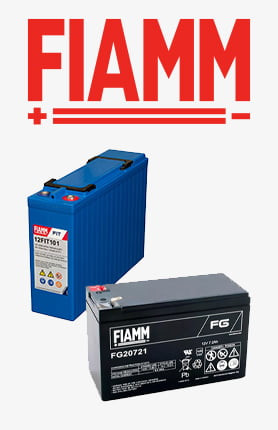Musisz być zalogowany/a
-
WróćX
-
Alkatrészek
-
-
Kategória
-
Félvezetők
- Diódák
- Tirisztorok
-
Elektromosan szigetelt modulok
- VISHAY (IR) elektromosan szigetelt modulok
- INFINEON (EUPEC) elektro-szigetelt modulok
- A Semikron elektromosan szigetelt moduljai
- POWEREX elektroszigetelt modulok
- IXYS elektromosan szigetelt modulok
- Elektro-szigetelt modulok a POSEICO-tól
- Az ABB elektromosan szigetelt moduljai
- Elektro-szigetelt modulok a TECHSEM-től
- Przejdź do podkategorii
- Híd egyenirányítók
-
Tranzisztorok
- GeneSiC tranzisztorok
- Mitsubishi SiC MOSFET modulok
- STARPOWER SiC MOSFET modulok
- ABB SiC MOSFET modulok
- IGBT modulok a MITSUBISHI-tól
- MITSUBISHI tranzisztor modulok
- MITSUBISHI MOSFET modulok
- ABB tranzisztor modulok
- IGBT modulok a POWEREX-től
- IGBT modulok – az INFINEON-tól (EUPEC)
- Szilícium-karbid félvezető elemek
- Przejdź do podkategorii
- Drivers
- Tápblokkok
- Przejdź do podkategorii
- LEM áram- és feszültségátalakítók
-
Passzív alkatrészek (kondenzátorok, ellenállások, biztosítékok, szűrők)
- Ellenállások
-
Biztosítékok
- Miniatűr biztosítékok ABC és AGC sorozatú elektronikus rendszerekhez
- Gyors működésű cső alakú biztosítékok
- Késleltetett lapkák GL/GG és AM karakterisztikával
- Ultragyors biztosítékok
- Brit és amerikai szabványos gyors működésű biztosítékok
- Gyors működésű európai szabványú biztosítékok
- Vontatási biztosítékok
- Nagyfeszültségű biztosítékok
- Przejdź do podkategorii
-
Kondenzátorok
- Kondenzátorok motorokhoz
- Elektrolit kondenzátorok
- Jégfilm kondenzátorok
- Teljesítménykondenzátorok
- Kondenzátorok egyenáramú áramkörökhöz
- Teljesítménykompenzációs kondenzátorok
- Nagyfeszültségű kondenzátorok
- Kondenzátorok indukciós fűtéshez
- Impulzuskondenzátorok
- DC LINK kondenzátorok
- Kondenzátorok AC/DC áramkörökhöz
- Przejdź do podkategorii
- Interferencia szűrők
- Szuperkondenzátorok
- Túlfeszültség elleni védelem
- TEMPEST Felfedő emissziós szűrők
- Túlfeszültség-levezető
- Przejdź do podkategorii
-
Relék és kontaktorok
- Relék és kontaktorok elmélete
- AC háromfázisú félvezető relék
- DC szilárdtest relék
- Szabályozók, vezérlőrendszerek és tartozékok
- Lágyindítás és irányváltó kontaktorok
- Elektromechanikus relék
- Kontaktorok
- Forgókapcsolók
-
Egyfázisú AC szilárdtest relék
- Egyfázisú váltakozó áramú szilárdtestrelék, 1. sorozat | D2425 | D2450
- Egyfázisú AC szilárdtest relék CWA és CWD sorozat
- Egyfázisú AC szilárdtest relék CMRA és CMRD sorozat
- Egyfázisú AC félvezető relék PS sorozat
- AC szilárdtest relék kettős és négyes sorozatú D24 D, TD24 Q, H12D48 D
- GN sorozatú egyfázisú szilárdtest relék
- Egyfázisú AC szilárdtest relék CKR sorozat
- Egyfázisú AC DIN sínes relék ERDA és ERAA SERIES
- Egyfázisú váltakozó áramú relék 150A áramerősséghez
- Kettős szilárdtest relék DIN sínes hűtőbordával integrálva
- Przejdź do podkategorii
- AC egyfázisú nyomtatható félvezető relék
- Interfész relék
- Przejdź do podkategorii
- Magok és egyéb induktív alkatrészek
- Radiátorok, Varisztorok, Hővédelem
- Ventillátorok
- Klíma, Kapcsolószekrény tartozékok, Hűtők
-
Akkumulátorok, töltők, puffer tápegységek és átalakítók
- Akkumulátorok, töltők - elméleti leírás
- Lítium-ion akkumulátorok. Egyedi akkumulátorok. Akkumulátorkezelő rendszer (BMS)
- Akkumulátorok
- Akkumulátortöltők és tartozékok
- UPS és puffer tápegységek
- Átalakítók és tartozékok napelemekhez
- Energiatárolás
- Hidrogén üzemanyagcellák
- Lítium-ion cellák
- Przejdź do podkategorii
- Automatizálás
-
Kábelek, Litz vezetékek, vezetékek, rugalmas csatlakozások
- Vezetékek
- Kábeltömszelencék és -hüvelyek
- Arcok
-
Kábelek speciális alkalmazásokhoz
- Hosszabbító és kiegyenlítő kábelek
- Hőelem kábelek
- Csatlakozó kábelek PT érzékelőkhöz
- Többeres kábelek hőm. -60°C és +1400°C között
- SILICOUL középfeszültségű kábelek
- Gyújtókábelek
- Fűtőkábelek
- Egyeres kábelek hőm. -60°C és +450°C között
- Vasúti vezetékek
- Fűtőkábelek pl
- Kábelek a védelmi ipar számára
- Przejdź do podkategorii
- pólók
-
Zsinór
- Lapos zsinór
- Kerek fonatok
- Nagyon rugalmas fonat - lapos
- Nagyon rugalmas zsinór - kerek
- Hengeres rézfonatok
- Réz hengeres fonatok és borítások
- Rugalmas földelő hevederek
- Horganyzott és rozsdamentes acélból készült hengeres fonatok
- PVC szigetelt rézfonatok - 85 fokos hőmérsékletig
- Lapos alumínium fonatok
- Csatlakozókészlet - zsinórok és csövek
- Przejdź do podkategorii
- Vontatási berendezések
- Kábelsaruk
- Szigetelt rugalmas sínek
- Többrétegű rugalmas sínek
- Kábelkezelő rendszerek
- Przejdź do podkategorii
- Az összes kategória megtekintése
-
Félvezetők
-
-
- Szállítók
-
Alkalmazások
- Bányászat, kohászat és öntöde
- Berendezések elosztó- és kapcsolószekrényekhez
- CNC gépek
- DC és AC hajtások (inverterek)
- Energetika
- Energia bankok
- Faszárító és -feldolgozó gépek
- Gépek műanyagok hőformázásához
- Hegesztőgépek és hegesztők
- Hőmérséklet mérés és szabályozás
- HVAC automatizálás
- Indukciós fűtés
- Ipari automatizálás
- Ipari védőfelszerelés
- Kutatási és laboratóriumi mérések
- Motorok és transzformátorok
- Nyomtatás
- Robbanásveszélyes zónák alkatrészei (EX)
- Tápegységek (UPS) és egyenirányító rendszerek
- Villamos és vasúti vontatás
-
Telepítés
-
-
Induktorok
-
-
Indukciós eszközök
-
-
Szolgáltatás
-
- Kapcsolat
- Zobacz wszystkie kategorie
Accidents at Work in Industry. How to Prevent Them?

Accidents involving humans occur everywhere - including in industry. Although the number of people injured in workplace accidents across the economy in 2020 decreased by almost a quarter, and the accident rate also declined, it is always important to remember to exercise caution while performing your duties.
But what if an accident happens? What can the injured person and their employer do in such a situation?
Accidents during work occur in every sector of the economy. According to annual studies, most accidents happen in the extensively developed industrial sector.
To take preventive actions against accidents, we need to answer the question: What is an accident?
Definition of an accident - What is an accident?
The definition of a workplace accident is precisely specified in Art. 3 para. 1 of the Act of October 30, 2002, on social insurance for accidents at work and occupational diseases (Journal of Laws of 2017, item 1773, as amended).
A workplace accident is considered a sudden event caused by an external factor resulting in injury or death, which occurred in connection with work:
- during or in connection with the performance of usual activities or instructions of superiors by the employee;
- during or in connection with the performance of activities for the employer by the employee, even without an order;
- while the employee is at the disposal of the employer on the way between the employer's headquarters and the place of performing duties resulting from the employment relationship.
An event can be classified as a workplace accident only if it simultaneously meets all three conditions given in the definition.
Types of workplace accidents
Workplace accidents are classified as:
- fatal accidents,
- serious accidents,
- collective accidents,
- injuries.
To qualify an incident as a workplace accident, three conditions must be met. The first is the concept of a sudden event. A ruling of the Social Insurance Tribunal on September 19, 1958, states that the duration should not exceed one working day. Suddenness is defined as the time during which a dangerous factor acted on the body. Thus, an accident can last a few seconds or a few hours. The second condition is an external cause. It occurs when the injury is caused by the action of a factor outside the person. The third condition is the connection with work, and it is a significant condition because a workplace accident can occur not only during work but also while being at the employer's disposal – that is, while waiting for an assignment at a place designated by the employer.
The Central Statistical Office in 2020 published a report on occupational safety. There were over 21,000 accidents in 2020, which means a decrease of 6,000 compared to 2019. However, it is worth mentioning that in 2020 there were periodic closures of industrial plants, which undoubtedly influenced the reduction of accidents. As for fatal accidents, there were 35 in 2020, 5 more than in 2019.
What to do if an accident occurs?
- Ensure that the rescuer is not in danger.
- Ensure the safety of the injured and provide first aid.
- Secure the accident site. It should be added here that making any changes at the accident site without the required permission is only permissible if it is necessary to save lives, secure property, or prevent danger.
- Conduct post-accident proceedings.
The last point is a very important aspect because drawing conclusions from accidents that have already occurred is a very valuable source of knowledge when analyzing and assessing the risks of industrial plants. The more knowledge about the danger, the lower the probability of repeating mistakes.
Causes of accidents in the industry
The main cause of industrial accidents is improper employee behavior, accounting for 60% of all accidents. The next cause in the ranking is the improper use of material or material in an unsuitable condition.
The main events causing injuries were collisions causing impact with a stationary object. Every fifth accident was caused by being hit by a moving object.
Other causes of accidents mentioned in the Central Statistical Office report include contact with sharp, rough, or coarse objects, physical or mental strain, contact with electricity, temperature, hazardous substances, and entrapment or crushing.
How to prevent workplace accidents in the industry?
Given the data indicating that 60% of accidents, i.e., more than half, are caused by improper employee behavior, we must look for answers in health and safety training and raising employee awareness. Equally important is the introduction of as many safety systems as possible into the industrial plant, provided by industrial automation.
A very important aspect is the preparation of workstations and the adaptation of the entire plant to the highest safety standards. The use of clear markings of danger zones throughout the plant. All kinds of signs, plaques, or even tapes marking routes through rooms contribute to raising awareness of existing hazards and thus greater caution on the part of employees.
The more sensors sensitive to improper parameters, the more devices detecting the presence of employees and warning of danger in hazardous areas, the greater the protection and lower the probability of an unfortunate accident occurring.
Also check out the article: safety in production plants.
Related posts
 Nowości w dziale zasilacze, przetwornice i inwertery – inwertery Premium
Nowości w dziale zasilacze, przetwornice i inwertery – inwertery Premium
 Oświetlenie do obrabiarek– oprawy KIRA!
Oświetlenie do obrabiarek– oprawy KIRA!




Leave a comment